Findings and Implications for Future Policy Efforts
Physical activity helps children stay physically fit, and reduce the risk for obesity, anxiety and other chronic diseases. Current U.S. guidelines call for children to get at least 60 minutes of physical activity daily but they are far from meeting these goals. With over 10 million children attending afterschool programs in the U.S. each year, including about 1.6 million in California alone, out-of-school time (OST) programs offer a promising setting for increasing children’s physical activity.
The California Distinguished After School Health (DASH) Recognition Program was the first state-legislated voluntary recognition program in OST focused on healthy eating and physical activity. Out-of-school time programs in California elementary and middle schools serving a high proportion of children from low-income families were eligible for the DASH Program to promote healthy eating and physical activity. The program included certification that participating programs met 10 program standards in health education, healthy eating, nutrition education, physical activity and screen time.
This study evaluated the policy for quality and technical assistance issues in delivering physical activity in DASH-certified programs. The primary research questions focus on understanding (1) how programs that apply for DASH certification differ from non-applicants on a range of characteristics and practices, (2) why some programs decide not to apply, and (3) identifying technical assistance needs to improve DASH compliance.
Key findings
- The most common physical activity session length was 30-35 minutes in which 36% of the time (or approximately 10 minutes) was spent on instruction and management and not on physical activity.
- The longer the session, the more MVPA time we observed, with boys being more active than girls. This finding is consistent with earlier studies of physical education, which have also shown that children typically attain MVPA for less than half of each class, and that boys are more active than girls (e.g., Lonsdale et al., 2013; McKenzie et al., 2004; Nader, 2003).
- Observations and staff interviews at DASH certified sites suggest that the amount of physical activity varies among sites. Some staff interpreted the DASH standard as a guideline for session length rather than for children’s activity time per se, and others noted that variation in children’s motivation and ability, session content, weather and other factors were influential.
Implications
During our evaluation, the program was allowed to sunset for a range of reasons, including concerns that relatively few programs applied to it and that quality was difficult to validate. Support for continuing DASH was also low due to its isolation from other related quality improvement legislation and its lack of funding for capacity building.
Although DASH ended, efforts to improve physical activity in OST are ongoing in California and other states. Findings from this study reinforce that, in order for children to receive adequate MVPA at OST programs, policies should:
- Include field-tested, clear language that clearly communicates whether time requirements refer to activity time offered or achieved;
- Facilitate access to training and technical assistance on how to maximize activity time, reduce management and instruction time, and ensure girls and boys are equally active;
- encourage physical activity periods that are long enough to accommodate instruction while Allowing children to accrue adequate MVPA;
- Include a mechanism for ongoing quality assurance; and
- Allow for modest levels of day-to-day variability at the classroom and child level, without allowing that variability to weaken activity goals.
Download the 17-page full report (PDF) and 2-page lay summary (coming soon).
Learn more about the project and research team here.
Suggested Citation:
Wiecha J & Rineer J. Physical Activity in California Out-of-School Time Sites Certified by the Distinguished After School Health Program (DASH): Findings and Implications for Future Policy Efforts. Research Triangle Park, NC: RTI International; 2019. Available at: https://paresearchcenter.org/wp-content/uploads/2019/07/PARC_RTI_DASH_Report_June.2019.pdf.

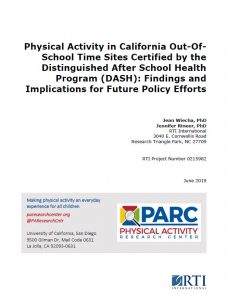
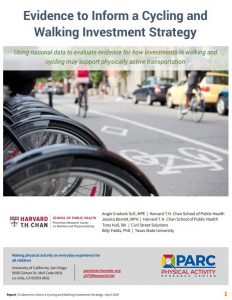
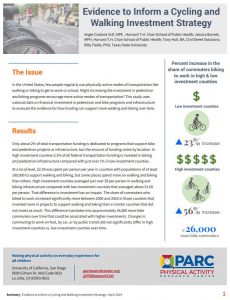
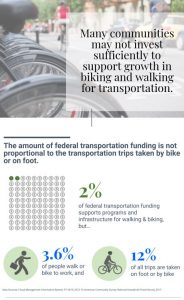

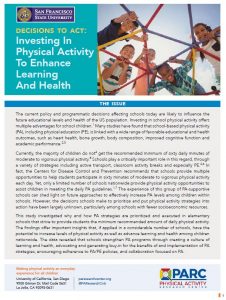
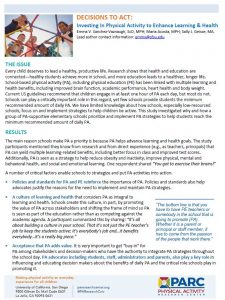 The main reason schools make PA a priority is because PA helps advance learning and health goals. The study participants mentioned they know from research and from direct experience (e.g., as teachers, principals) that PA can yield multiple learning-related benefits, including better focus in class and improved test scores. Additionally, PA is seen as a strategy to help reduce obesity and inactivity, improve physical, mental and behavioral health, and social and emotional learning. One respondent shared “You got to exercise their brains!”
The main reason schools make PA a priority is because PA helps advance learning and health goals. The study participants mentioned they know from research and from direct experience (e.g., as teachers, principals) that PA can yield multiple learning-related benefits, including better focus in class and improved test scores. Additionally, PA is seen as a strategy to help reduce obesity and inactivity, improve physical, mental and behavioral health, and social and emotional learning. One respondent shared “You got to exercise their brains!”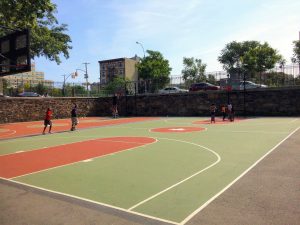 In cities across the country, public parks and playgrounds provide opportunities to increase routine physical activity among children during non-school hours. Because neighborhood parks are widely available and affordable, their potential to encourage children to be more active is particularly important in low-income communities of color.
In cities across the country, public parks and playgrounds provide opportunities to increase routine physical activity among children during non-school hours. Because neighborhood parks are widely available and affordable, their potential to encourage children to be more active is particularly important in low-income communities of color. 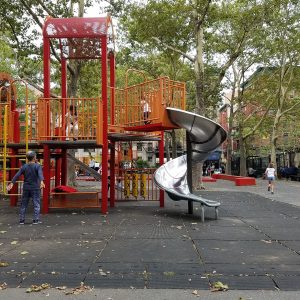 As PARC focuses on kids between 5 and 10 years of age, we want to share our observations on observing children across all these days; 79 unique days in fact. Over 16,500 children were observed during this study. Each momentary scan averaged over 1.5 children per area observed, or 56 children observed per hour. Playgrounds had the most children and there were more in the parks from 6-7pm than any other time (10am, 3pm, 3:30pm). More children were observed in parks during the school year than the summer, and more on weekend observations than weekdays. Areas of the park where organized activities were occurring or were in the shade were more popular than those not organized or in full sun.
As PARC focuses on kids between 5 and 10 years of age, we want to share our observations on observing children across all these days; 79 unique days in fact. Over 16,500 children were observed during this study. Each momentary scan averaged over 1.5 children per area observed, or 56 children observed per hour. Playgrounds had the most children and there were more in the parks from 6-7pm than any other time (10am, 3pm, 3:30pm). More children were observed in parks during the school year than the summer, and more on weekend observations than weekdays. Areas of the park where organized activities were occurring or were in the shade were more popular than those not organized or in full sun.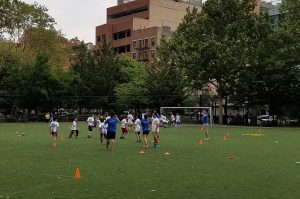 The parks and playgrounds we observed in New York City were well used. Across all visits, children were present over 60% of the momentary scans of playgrounds. Kids ran from playground area to swings to splash areas while parents, guardians, or older siblings sat nearby in the shade. During one observation, a parks staff member brought out bouncy balls, cones, and hula hoops, just setting these in the middle of the playground area. He did not provide instructions, but allowed the children to use the equipment as they wanted. A hula hoop competition ensued in one corner followed by the use of a hula hoop set on cones as a sort of basketball hoop with children running around and throwing the balls toward the hoops while others blocked their shots. Also anecdotally we saw families spending multiple hours in the parks during the summer, especially those parks featuring splash areas for the kids.
The parks and playgrounds we observed in New York City were well used. Across all visits, children were present over 60% of the momentary scans of playgrounds. Kids ran from playground area to swings to splash areas while parents, guardians, or older siblings sat nearby in the shade. During one observation, a parks staff member brought out bouncy balls, cones, and hula hoops, just setting these in the middle of the playground area. He did not provide instructions, but allowed the children to use the equipment as they wanted. A hula hoop competition ensued in one corner followed by the use of a hula hoop set on cones as a sort of basketball hoop with children running around and throwing the balls toward the hoops while others blocked their shots. Also anecdotally we saw families spending multiple hours in the parks during the summer, especially those parks featuring splash areas for the kids.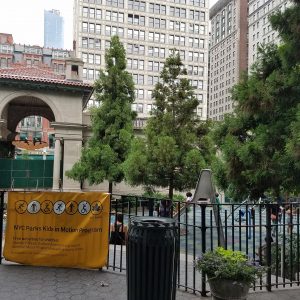 In the highly dense environments of New York the space of a park and playground and even the simplest of play equipment kept the parks well used across the four months of observations.
In the highly dense environments of New York the space of a park and playground and even the simplest of play equipment kept the parks well used across the four months of observations.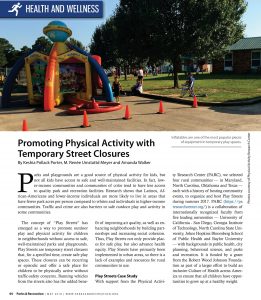
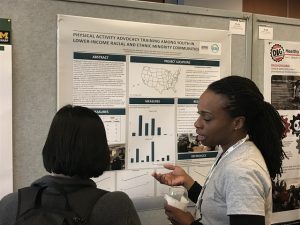
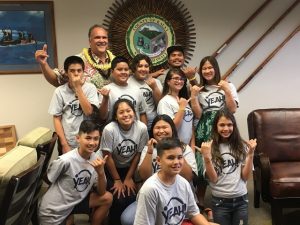
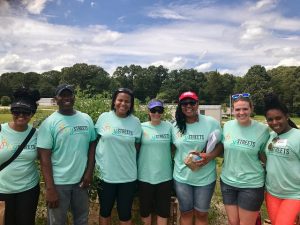 Play Streets! Have you heard of them? Well, Play Streets are temporary street closures that allow for an area to be used for physical activity with the earliest of these events dating back to the 1920s. With support from the Physical Activity Research Center (PARC), we have been studying how Play Streets are organized and their impacts on kids, families, and communities in rural settings. To get the word out about our work, in February our team gave three presentations at the
Play Streets! Have you heard of them? Well, Play Streets are temporary street closures that allow for an area to be used for physical activity with the earliest of these events dating back to the 1920s. With support from the Physical Activity Research Center (PARC), we have been studying how Play Streets are organized and their impacts on kids, families, and communities in rural settings. To get the word out about our work, in February our team gave three presentations at the 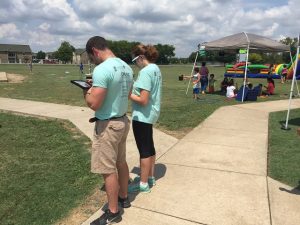 Two of our presentations described two systematic reviews of the existing literature regarding Play Streets and their impacts on play for children, physical activity levels, and communities. We examined 13 peer review articles (from 180 abstracts reviewed in the academic literature) that met inclusion criteria for the review. Six of these studies were from the U.S. and 10 out of the 13 studies did not measure physical activity outcomes. We also reviewed the non-academic literature on Play Streets. The 36 documents that we reviewed (out of 247 documents) were from the U.S., U.K., Canada, Australia, and Chile. Nearly all (34 out of the 36 documents) did not measure physical activity outcomes.
Two of our presentations described two systematic reviews of the existing literature regarding Play Streets and their impacts on play for children, physical activity levels, and communities. We examined 13 peer review articles (from 180 abstracts reviewed in the academic literature) that met inclusion criteria for the review. Six of these studies were from the U.S. and 10 out of the 13 studies did not measure physical activity outcomes. We also reviewed the non-academic literature on Play Streets. The 36 documents that we reviewed (out of 247 documents) were from the U.S., U.K., Canada, Australia, and Chile. Nearly all (34 out of the 36 documents) did not measure physical activity outcomes.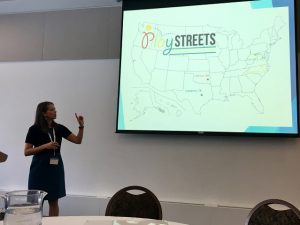 Our other presentations examined how Play Streets impact the physical activity of youth in rural communities. We were excited for these preliminary findings because they are from the first ever investigation of Play Streets in rural communities. In
Our other presentations examined how Play Streets impact the physical activity of youth in rural communities. We were excited for these preliminary findings because they are from the first ever investigation of Play Streets in rural communities. In